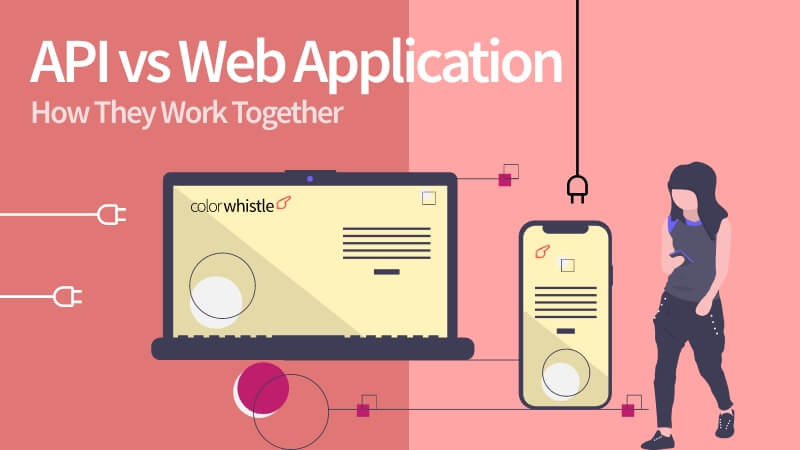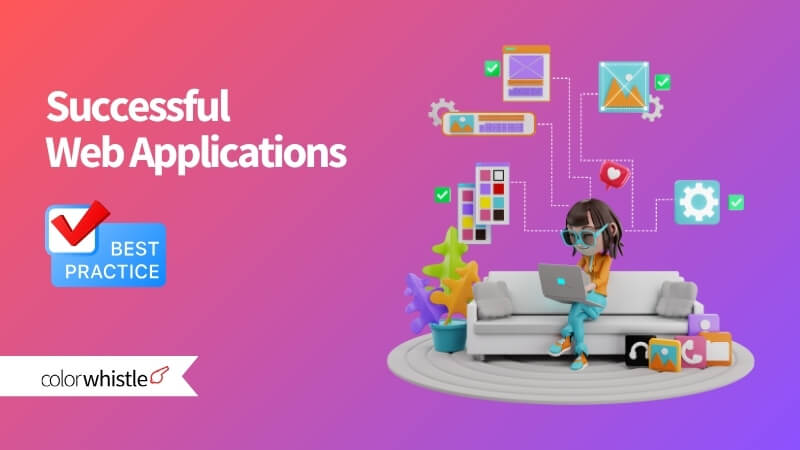API and web applications are two essential components of the digital world. They are like Batman and Robin – they complement each other and work together to save the day. Just as Robin enhances Batman’s success, APIs play a crucial role in enabling a web application to function seamlessly. In this blog, we will explore the differences between APIs and web applications, their individual strengths and weaknesses, and how they work together to create a seamless user experience through a harmonious API and Web Application relationship. So, buckle up, grab some popcorn, and let’s dive into the world of APIs and web applications.
What is an API?
API stands for Application Programming Interface. It is a set of protocols and routines for building software applications. An API set outs how software components should connect and APIs allow for communication between different systems. APIs act as a messenger that takes requests from an application and returns the required data. Think of APIs as the delivery person who brings pizza to your doorstep. The pizza is the data, and the delivery person is the API.
Also Read
What is a Web Application?
A web application, also known as a web app, is a software application that runs on the internet. It is accessible through a web browser and is designed to offer users an infallible experience. A web application is a compilation of pages that are connected through links and allows users to interact with the application by filling out forms, clicking buttons, etc. A web application is like a superhero in its own right. It offers users the power to accomplish tasks and solve issues with just a few clicks.

API vs Web Application
Feature
API
Web Application
Purpose
To provide programmatic access to data or services
To provide a graphical user interface (GUI) for users to interact with data or services
Accessibility
Typically accessed via code or command line interface
Typically accessed through a web browser
Data Format
Data is usually returned in a structured format (e.g. JSON, XML)
Data is displayed in a formatted manner on web pages
User Experience
Designed for developers and automation, may not have a user-friendly interface
Designed for end-users with a focus on user experience and design
Security
Can include built-in security features such as authentication and authorization
Can include security features but often relies on other layers (e.g. web server) for security
Scalability
Can easily handle a large number of requests and can be load balanced
Can be more complex to scale and may require additional infrastructure
Customization
Flexible and customizable, can be used to meet specific needs
Customization is depends on the design and architecture of the web application.
API Uses For Web Application
Web Application APIs offer a wealth of opportunities allowing the to create powerful and innovative applications. From real-time data access to custom mobile apps, these tools provide an amazing range of capabilities!
- Data integration: APIs can be used to access data from other sources and integrate it into a web application.
- Third-party services: several web applications integrate with other third-party services using APIs, such as payment gateways, social media platforms, etc.
- Microservices architecture: different services communicate with each other using APIs to perform certain tasks.
- Mobile applications: mobile applications frequently use APIs to interact with a web application’s backend and retrieve data or perform actions on behalf of the user.
- Automation: APIs can automate processes and perform actions programmatically, such as sending notifications or updating data.
How APIs and Web Applications Work Together
APIs and web applications work together to deliver users an impeccable experience. A web application transmits requests to an API, and the API returns the required data. The web application then uses this data to display the information to the user. At a technical level, when a user interacts with a web application, the application sends a request to an API in the form of an HTTP request (such as a GET or POST request). The API processes the request and returns the requested data in the form of a response, usually in JSON or XML format. The web application, in turn, interprets the response and presents the information to the user like a picture-perfect puzzle piece. This seamless interaction highlights the essential API and Web Application differences, showcasing how they complement each other in delivering a cohesive user experience.
APIs also play an important role in decoupling the front-end and back-end of a web application. This means that the front-end (what the user interacts with) and back-end (the server-side logic) can be developed and maintained independently. This makes it easier to update and scale each component as needed without affecting the others. The API acts as a bridge between the front end and back end, allowing for the separation of concerns and easier maintenance.
Also Read
For instance, when you shop on an e-commerce web application, it acts as a messenger and sends a request to the store’s API, asking for information about the product, such as its features, snaps, and price. The API acts as the data hub and sends the requested data, which the web application then displays like a shop window, showcasing the goods.
Looking for Web App Development Services / Solutions?
Seize and experience the transformative impact of Web App Development Services & Solutions with ColorWhistle.
Close-out
APIs and web applications represent the vanguard of innovation in the technology sphere, serving as the fundamental mechanisms behind an array of cutting-edge applications. Despite this, while APIs continue to flourish and evolve, web applications leveraging SOAP and Service Oriented Architecture.
At ColorWhistle, our team of experts leverages a variety of APIs to enhance the functionality of the applications we build for our clients. By integrating these APIs, we create robust, feature-rich applications that meet the evolving needs of today’s users. Reach out to us through messaging or call at +1 210-787-3600 to make your online presence stand out from crowd.
What’s Next?
Now that you’ve had the chance to explore our blog, it’s time to take the next step and see what opportunities await!
Read Similar Content
Wish to Explore Our Services?
Have an Idea? or Project Scope?
In quest of the Perfect Web App Development Buddy?
Be unrestricted to click the other trendy writes under this title that suits your needs the best!





